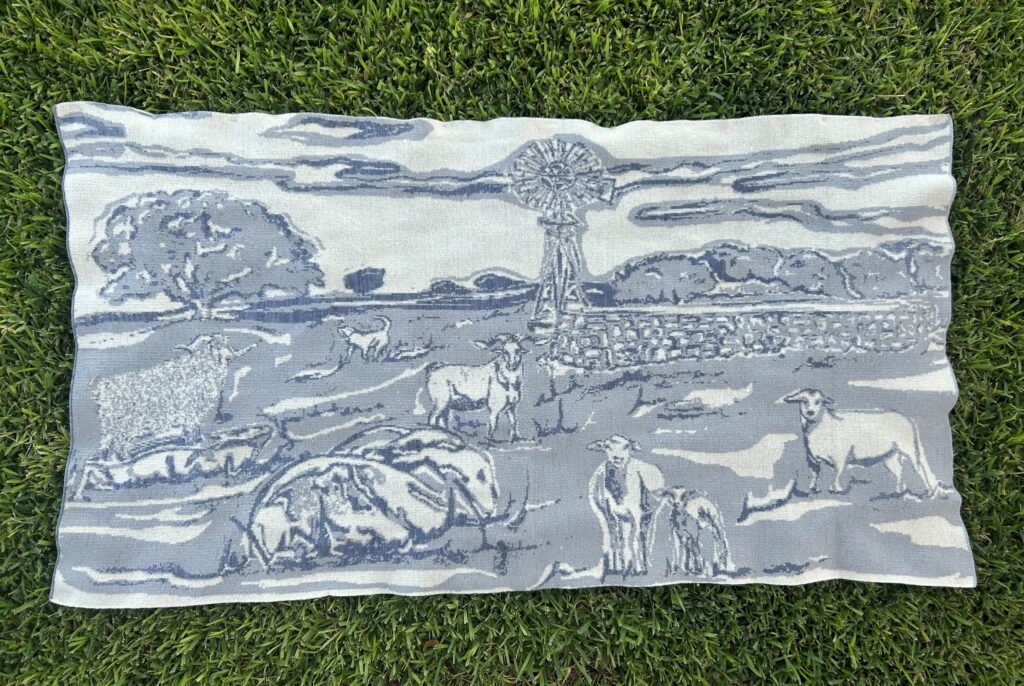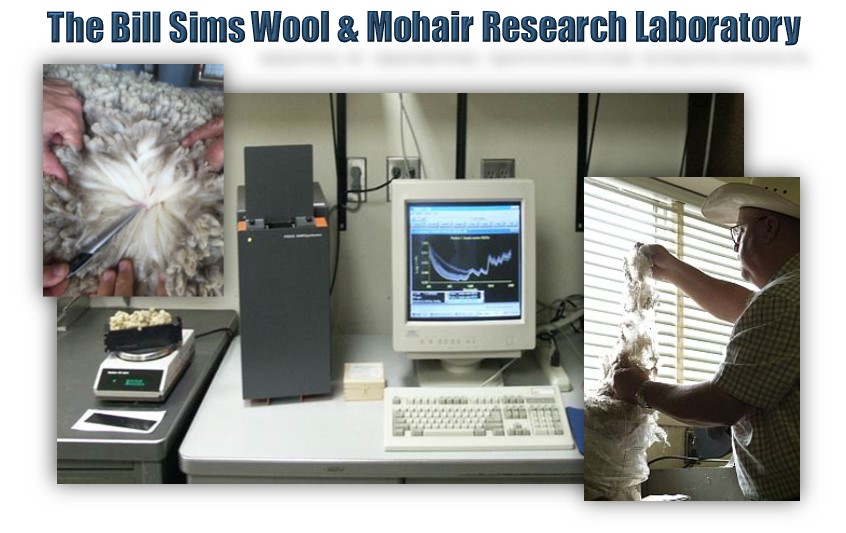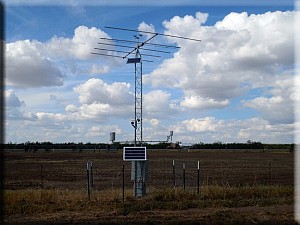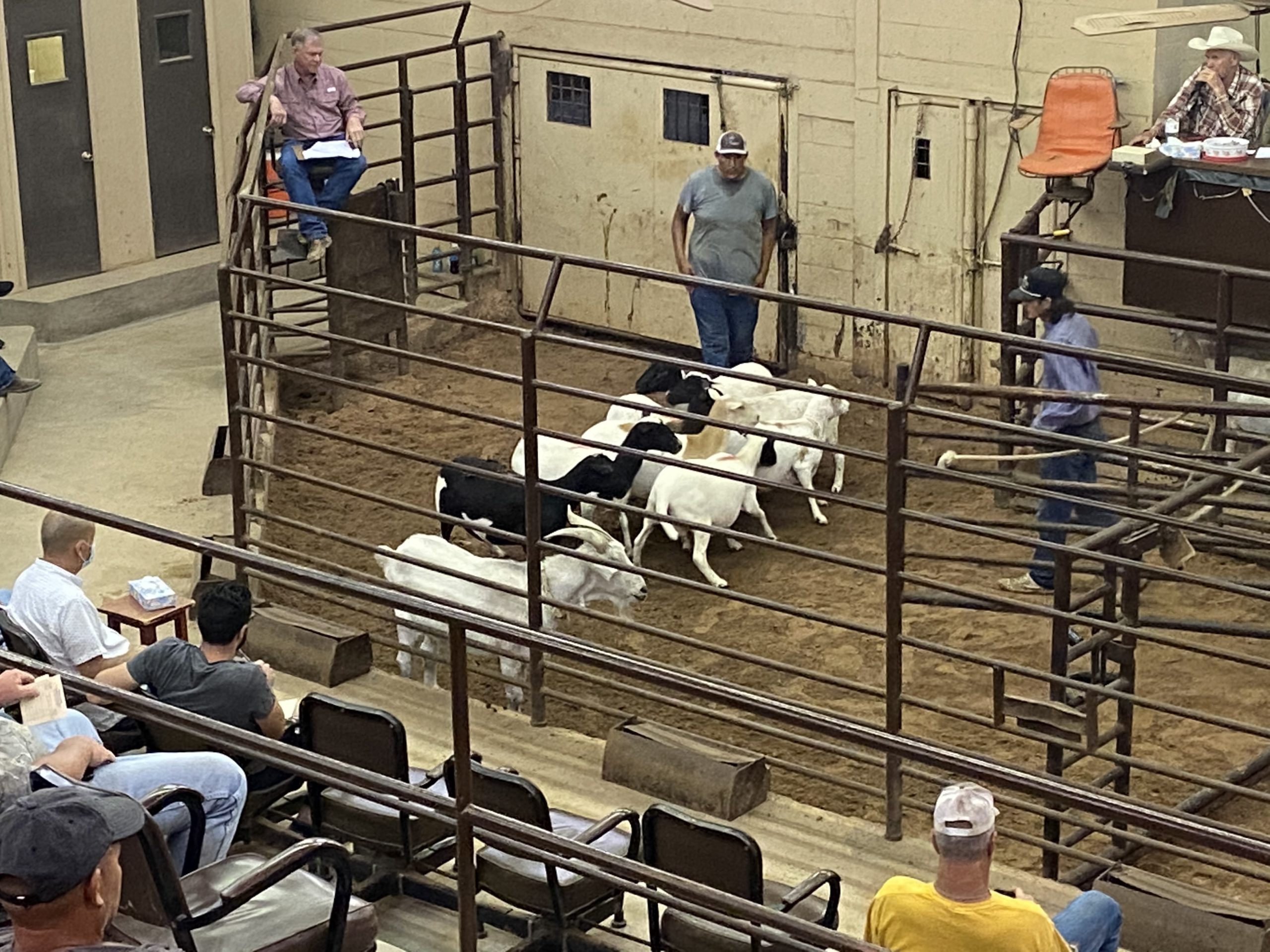AgriLife LGD Program Update
Don’t forget to register for our next LGD webinar! It will be held on Thursday, July 22 at 3 p.m. and the topic will be canine reproduction. Dr. Bethany Gibson from Ohio State University will be our guest presenter for this webinar. You can register for the event on our Facebook page by clicking on the blue “Go To Link” button or on the AgriLife Center’s website under the events section. The webinar will also be broadcast live on Facebook. The video will be recorded and posted to our YouTube Channel.
The Texas LGD Association website is now live. Visit the site and become one of the founding members of this association. You can also check out the association on their Facebook page @TexasLGDassociation. The Texas LGD Association will be giving a short presentation and on August 20 & 21 in San Angelo.
LGD Puppy Bonding Project
Doc and Thelma had there “Yokes of Shame” removed in early June and have not left their pasture again. They were moved along with all their charges to a new pasture away from the meat goats and their LGD buddy Thor. Hopefully once they are placed in Menard, they will not roam to other ranches, unlike the “Legends of Country Music”. We will keep you updated on their progress. Squiggy is doing great in Sonora learning the guardian way from our oldest LGD, Queenie. Wyatt was placed in Ozona at our research ranch and has been a welcome addition to the ranch. He was placed in a small pen with Angora goats for 10 days and then released with the main herd and Max. Both dogs seem to be getting along well with each other. While, there isn’t hard research data to support this, we like to place the dogs with livestock in a small pen at the new location for a week or so before we turn them out into larger pastures. Our observation has been that this helps the dogs stay with the new stock and decreases the chance they will roam looking for their old charges.
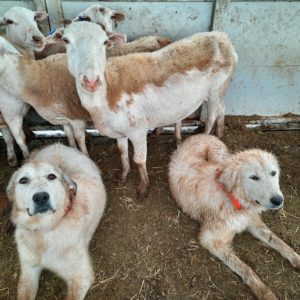
Louise (left) and Laverne (right) with their new charges headed to Iraan. Lenny was a little camera shy that day! (Texas A&M AgriLife photo courtesy Costanzo 2021)
Louise, Lenny, and Laverne were picked up in mid-June by our cooperating producer. They were placed on a large ranch near Iraan, Texas. The three pups are all doing well in large pastures of approximately three sections. They are making the rounds through the pasture on a regular basis and have not roamed outside the pasture boundaries as of the end of June. The dogs had a difficult time at first using a new feeding station and feed type. Anytime you change feeds, just as with livestock, it helps to gradually make the change over several days so that the dogs stay on feed. LGDs are slow to adapt to new changes in their environment. When introducing a new feeding station make sure that you show the dogs how to enter and exit several times over a few days so that they learn how to get in and out of the new feeding station.
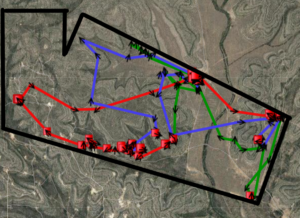
Lenny, Laverne, and Louise’s travels for one day in June on an 1800-acre pasture. Lenny is red, Laverne green and Louise is blue. There are two water and feed locations on the northern boundary of the fence (black line). (Texas A&M AgriLife photo courtesy Costanzo 2021)
The new LoRa Oyster trackers from Lone Star Tracking are working well overall in Ozona. They are set for 15-minute pings. The red line in the picture shows Goliaths travel path for a week. The blue squares with numbers are his stopping locations. He traveled 21.4 miles in 7 days for an average of 3.1 miles a day. Many dogs travel much farther than that on larger ranches. A yearlong research project that was conducted by AgriLife – San Angelo a few years ago, showed that LGDs traveled an average of 7 miles a day, with a range of 4 to 12 miles a day!
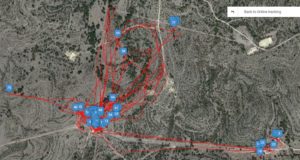
Goliath’s travels from 6-9-21 to 6-15-21 in Ozona. (Texas A&M AgriLife photo courtesy Costanzo 2021)
For active LGDs such as Goliath, it’s important that you provide adequate feed and water resources for your LGDs year-round. A dog chow with protein in the 18-22% and fat in the 14-18% is recommended to keep LGDs in optimum condition. Dog chow that has animal protein listed as the first ingredient and adequate amounts of carbohydrates tend to be more easily digested. This requires less dog food to meet their daily needs compared to dog food of a lesser quality. In the heat of the summer this is important as we tend to see a reduction in LGD feed intakes and drops in body condition. A dog’s digestive tract has evolved over time and they require carbohydrates in their diet to maintain a healthy condition.
If you enjoyed our monthly LGD blog don’t forget to subscribe to it The Guardian Way | Texas A&M AgriLife Research and Extension Center at San Angelo (tamu.edu). To provide feedback on this article or request topics for future articles, please contact me at bill.costanzo@ag.tamu.edu or 325-657-7311. The Texas A&M AgriLife Livestock Guardian Dog Program is a cooperative effort by Texas A&M AgriLife Research and the Texas Sheep and Goat Predator Management Board. Make sure to follow us on our social media sites and share them with your friends and family!
Facebook: https://www.facebook.com/TAMUlivestockguarddog/
Instagram: @tamulivestockguarddog
YouTube: https://www.youtube.com/channel/UCF7YbP6bNDV7___6H8mifBA
Don’t forget to check out the Texas LGD Association on online! Follow the organization at https://www.facebook.com/TexasLGDAssociation or check out their website!

